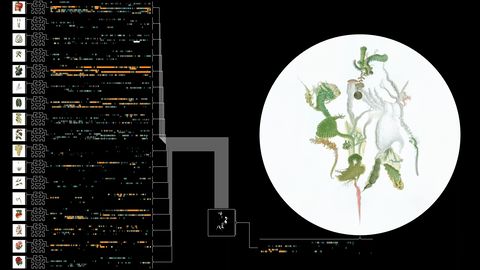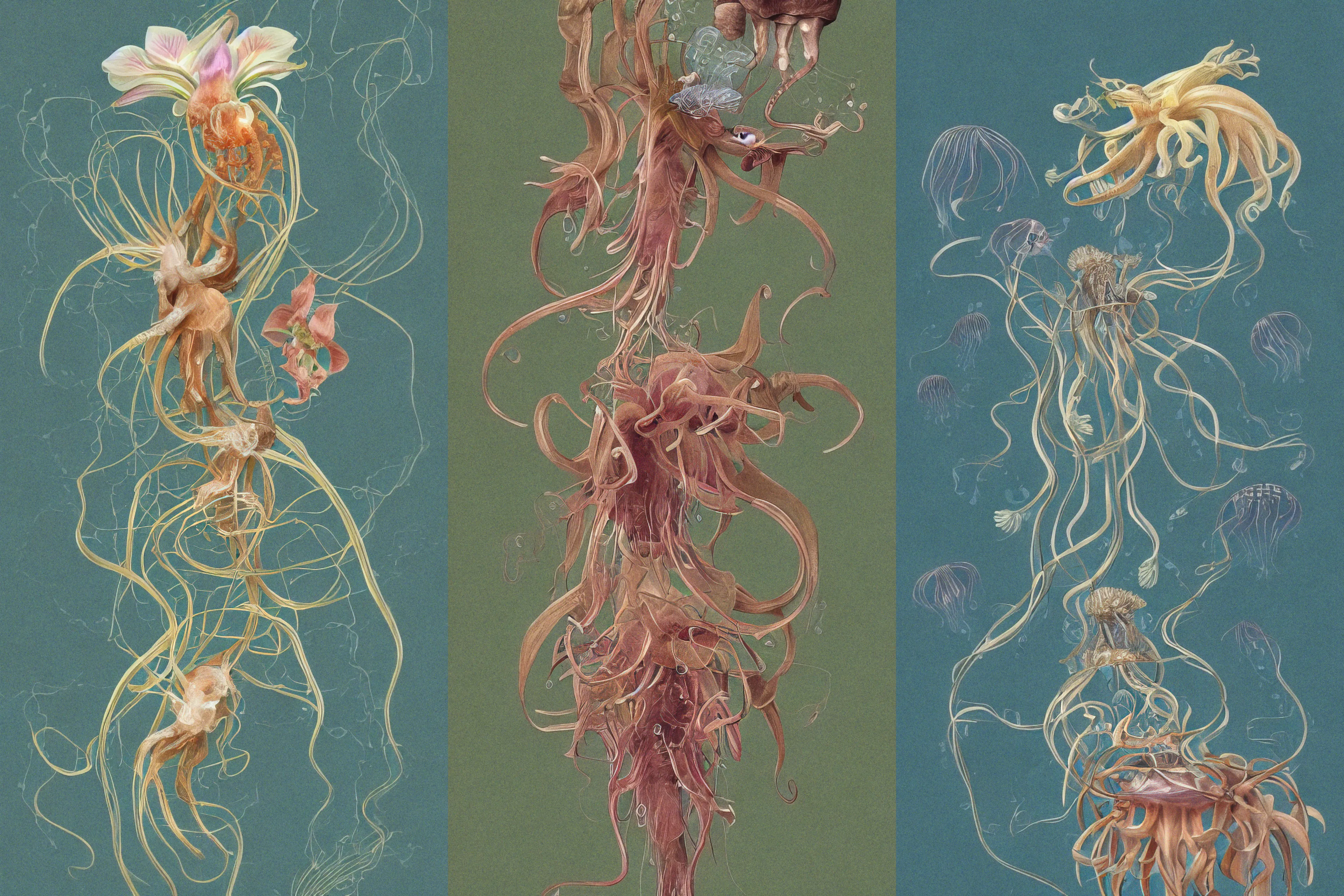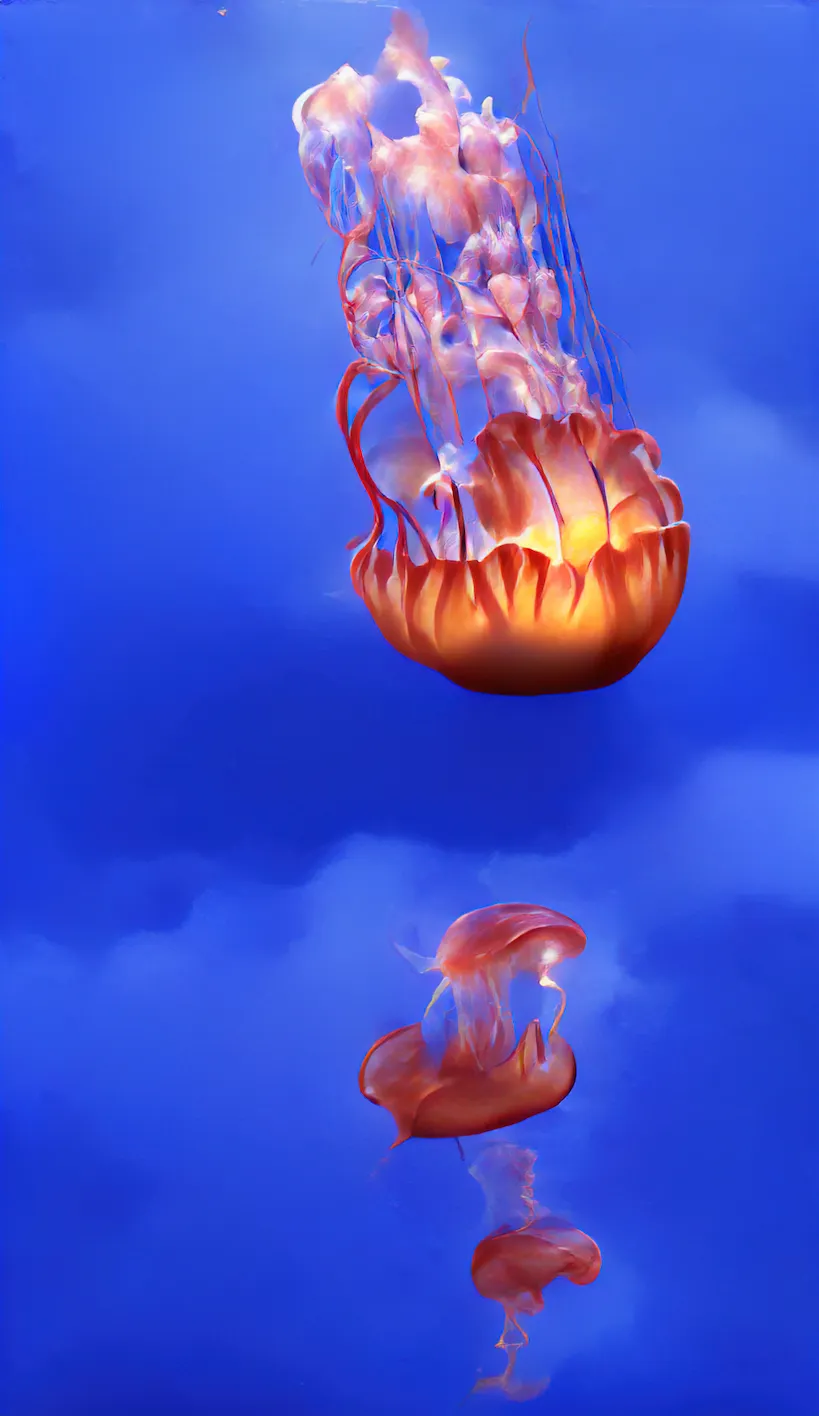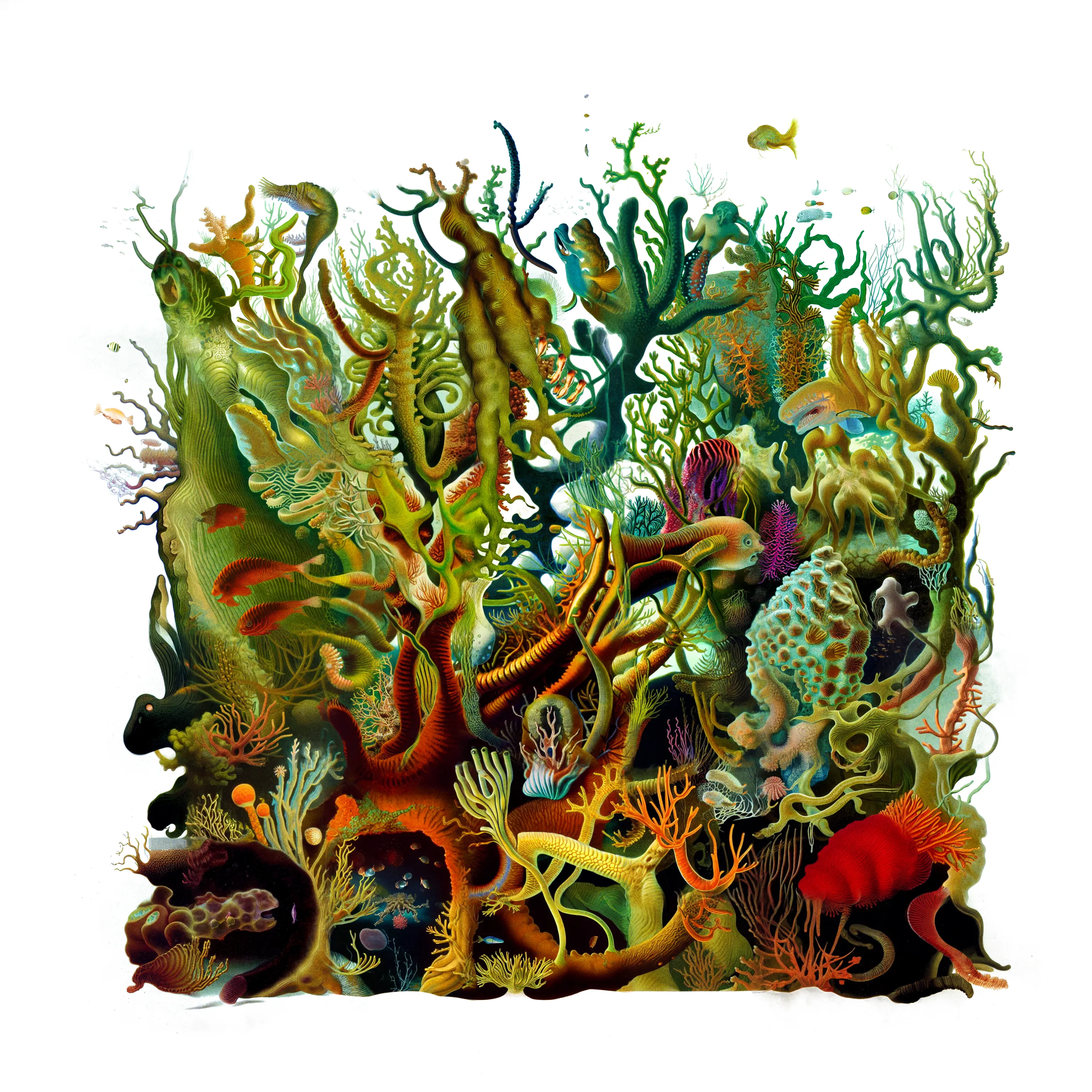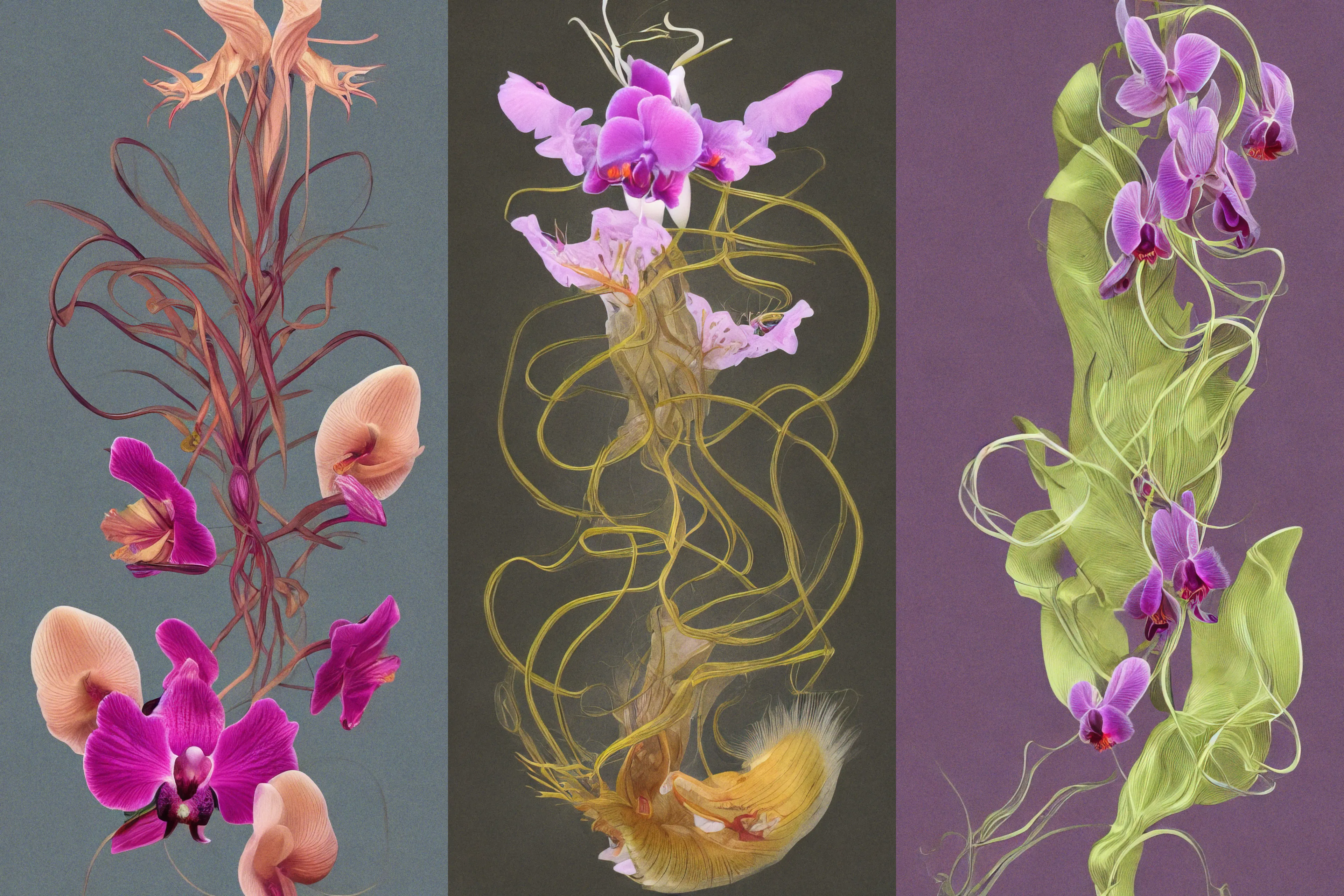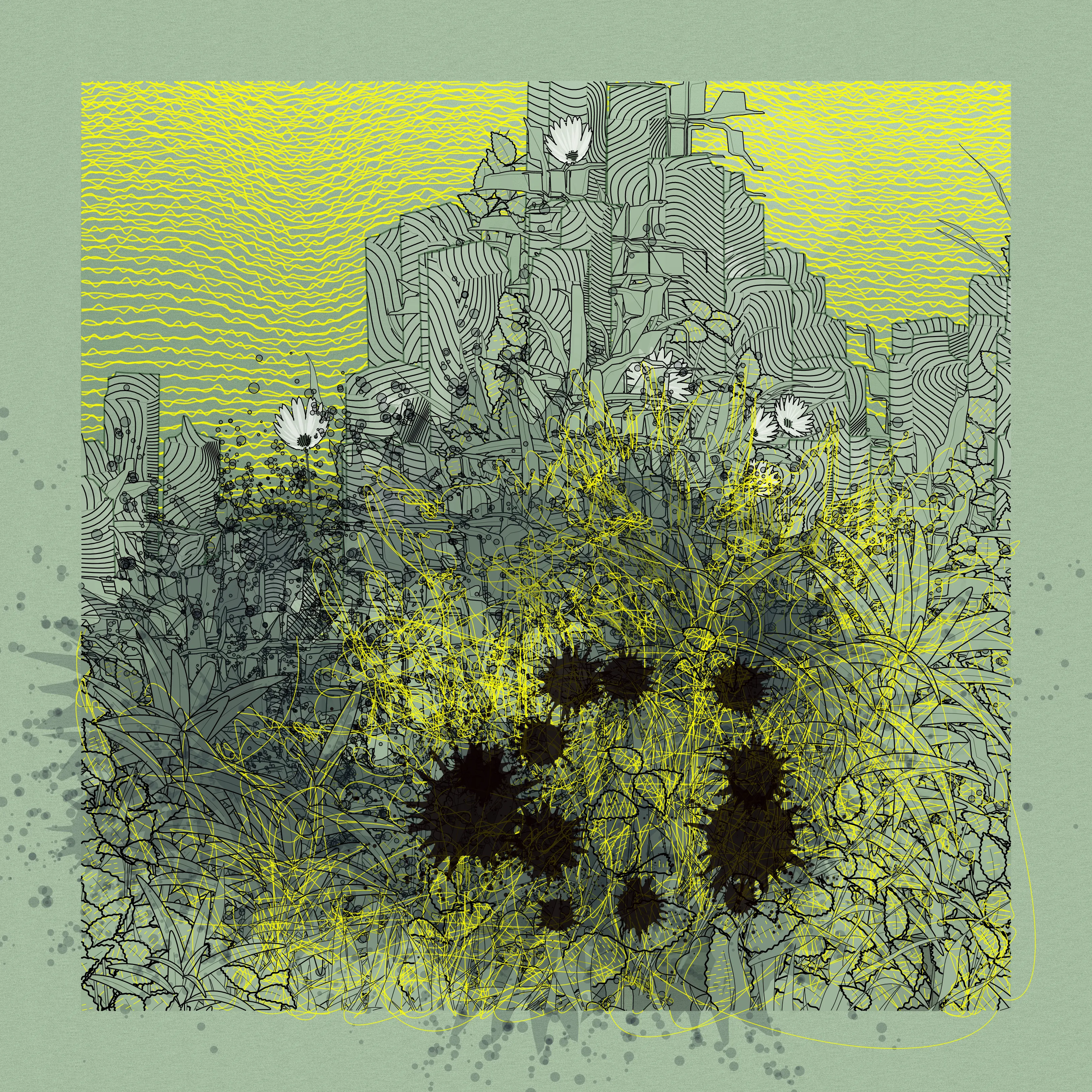Subscribe to get the latest on artists, exhibitions and more.
Artist for the living: Museum Week presents Zancan, Entangled Others, Geoffrey Pugen, Phaust, and Paweł Grzelak

What is the reason-to-be of this exhibition "Reconciliation with the living" and what is behind the hashtag #Artists4theLiving?
Museum Week: All experts agree: the climate crisis is the greatest challenge of the 21st century. We are in a race against time to conserve our natural habitats, their beauty and diversity, to protect our ecosystems and natural resources, and to pass them on to future generations. Change depends on more than political and legal agreements, however vital for the future: it demands a shift in attitudes and a new perspective on the place of humans in nature.
Artists can help bring about this shift in attitudes because, as producers of universal messages, they help change the way we look at the world. And because the weight of digital technology in public debate is growing all the time and awareness is now also shaped online, we decided to take a closer look at the work of these digital artists who explore the themes of the living and biodiversity. By raising our awareness, they help us think about how to reconcile humanity with itself and the living, and represent, whether they state it openly or not, a form of art that builds the momentum of the environmental cause, which we might call green artivism.
Paweł Grzelak: For the first time in history, a human expedition reached the Mariana Trench ocean floor at a depth of 10,916 metres in 1960.
Scientists assumed that no multicellular organisms would be able to live in these harsh environments.
But there was life, and it was abundant. Many species are still awaiting to be discovered 60 years later.
"Specimens" is a collection of five procedurally generated and animated imaginary creatures. The artist combines deep-sea organisms' patterns, behaviours, and structures with the peculiar appearance of microscopic imaging, culminating in the creation of new, digital living forms.
Entangled Others: How do we negotiate the appearance of similarity, yet fundamental difference in function and context? With our frame of experience being decidedly terrestrial, it’s too easy to project into other contexts, such as the aquatic, qualities based upon their appearance, in turn creating a new ecosystem of projected references and associations. This artificial veil on our perception is a never-ending surface that we can strive to make porous and permeable to our senses, but only if we can at first learn to see these constructions that decorate it.
Phaust: Co(r)ral dives beneath the ocean. Its verticality a reminder of hidden depths. Its colours inspired by the vibrancy of coral reefs. Like those reefs, it is dynamic: existing between a healthy, colourful state and a damaged, bleached state. Just as coral can recover from bleaching if temperatures drop and conditions normalise so Co(r)ral loops between those states – a reminder of our responsibility to act to reverse the damage.
A generative artwork reminding us of the importance of gathering together to confine our impact on ecosystems. Co(r)ral highlights the process of coral bleaching and our ability to act to reverse it.
Co(r)ral builds upon Pointila – a long-form generative art collection released on Art Blocks in September 2022. Pointila explored how dots reminiscent of Pointillist painting could create a range of generative landscapes in different styles.
Co(r)ral can be displayed in triptych to highlight the change in state. It can be displayed as a looping, live artwork or as a single interactive piece. When viewed up close, you can see the distinct dots that create the piece.
Geoffrey Pugen: Ecosphere I & II are hyperreal, utopion and dystopian renders of an imagined future. Pugen explores relationships between the real, the natural and the artificial. His practice often highlights the tensions of virtual identity through altering and manipulating existing images. Working with video, film, performance and photography, Pugen renders situations that examine our perceptions of how history, documentation, and simulation intersect.
Zancan: I was a very young boy when I was stunned by a machine in a store: a typewriter with an LCD segment display. It was tangible proof of a dream future, then called "the year 2000", which would bring us flying cars and helpful humanoid robots. I grew up and organized my professional and creative life inhabited by this childhood fascination for the marvels of technology. You have to mature enough to understand when adhering to these promises of a benevolent and playful future makes you a devoted consumer. I broke later with this utopia of abundance, ease and technological comfort, not without difficulty; Having become a critic of my own desires, I now live with this torment: our energy to build carries our own demise.
There are those gurus whom we love to revere, those makers of jewels, pleasures and riches, who chant the promise of our individual happiness in technological progress. These make solutions up that stir up the very problem. "Always control your speed," said the driving instructor; today no one knows how to brake.
Everything I create today is inhabited by this doubt and this guilt, in the realization that my innocent pleasure of creating depens on what fuels our race towards disaster.
Yet energy is the engine of men. Art has this kind of energy, charismatic and unifying. If I believe little in technology to save humanity, I keep hope in humanity, in its conscience, in the universality of its love. If only one power is given to artists, it is that of being able to touch, sometimes, the hearts of men, and in this sense, I have this duty to continue to try.
“Landscape with carbon offset” is an honest critique of my own consciousness as an artist working with technology. The canvas where the desire to explore new forms of art is expressed, will always remain stained with the hydrocarbons that I participated in burning ; the technological solutions that we place our faith in are barely more than ways to wash away our guilt. For these reasons, through the hard times, more than ever, we need beauty in our lives.
This year, you have invited many NFT artists including Refik Anadol, Sofia Crespo & Feileacan McCormick, Michael Zancan, or Phaust, who will be exhibited at the UNESCO HQ in Paris and displayed on thousands of screen across France. That’s quite seminal! How do you see the role of NFTs in art, culture and social initiatives?
Museum Week: Yes, we are very honoured to gather all these great names! For us, NFT is a revolution for the art world, because it allows more and more artists to make a living from their Art; thus, it reinforces the role of the artist in society in its capacities to shape opinions and to change minds. In fact, it is the entire ecosystem of cultural and creative industries that benefits from the irruption of NFTs: it brings value to creativity and creation and, in a way, makes the Internet a safer place.
This is why we are producing an exhibition with the non-profit organization Culture For Causes Network to be held at UNESCO HQ in Paris on November 25 and 26, 2022 to coincide with the Earth University. It will feature emblematic works in situ and a virtual gallery that extends the artistic installation into an intangible space.
Beyond the exhibition "Reconciliation with the living" per se, we are launching #Artists4theLiving, a worldwide movement devoted to inciting more and more artists to seize the environmental theme represented by this hashtag. In the future, we will organize other exhibitions and we will be particularly happy to feature more artists, those who are interested should contact us!
Museum Week presents Zancan, Entangled Others, Geoffrey Pugen, Phaust, and Paweł Grzelak for the exhibition 'Reconciliation with the Living.'
See the works on the 25th November at 9:00pm CET.
Entangled Others
Entangled Others is the shared studio practice of artists Feileacan McCormick and Sofia Crespo. Their work focuses on ecology, nature, and generative arts.
Zancan
Zancan, generative artist from Bordeaux, France, has been both a painter and a programmer for four decades. By synergizing his former practice as a traditional artist working with oil paint with the computer code medium, he enlightened the graphical possibilities of a « figurative-generative » art genre. His digital artworks and resulting pen-plotter drawings, which rely on technology both to...
MuseumWeek
MuseumWeek is an international community of professionals working in galleries, libraries, archives, museums, science and music centers, and other cultural organisations, with a shared vision of social impact through culture. Organizing both online and offline events, MuseumWeek also brings together artists and digital creators from around the world committed to social change.
Paweł Grzelak
Paweł Grzelak is a 3D artist specializing in procedural, generative, and code-based art. With a passion for creating mesmerizing animations that blur the lines between reality and imagination, Paweł combines different characteristics from flora and fauna to bring his own unique creations to life.
Drawing inspiration from the strange and wondrous creatures of the underwater world, mushrooms...
